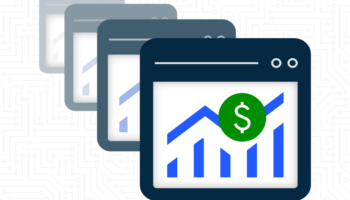Creating and maintaining customer relationships has never been more important, especially with third-party cookies coming to a halt in (now) late 2023. As our paid marketing expert discussed in a recent blog, being prepared to effectively advertise without this data is crucial, but you need to know what to do and how to do it, starting with understanding your company’s new and existing first-party data.
What is first-party data?
First-party data is collected directly from your customer’s behaviors and activities and is owned by the company itself. For example, transaction history collected from an OMS like CrossPeak (our proprietary OMS for WooCommerce), form fills requesting contact information, and interactions with the company across channels. All are insightful behaviors and actions that can be collected and used to define the customer journey, behavioral trends, target segments, and much more.
Benefits of Using First-Party Data
The good news about first-party data is that because users have consented to the data being collected or submitted the information themselves, it’s more reliable than third-party data. Below are a few benefits of first-party data implementation:
Obtaining this type of data allows for precise targeting, making your leads that much more valuable and likely to convert. If used correctly, your ROI can be much greater than it is with the data you get from the (almost) infamous third-party cookies.
Accurate and up-to-date customer information allows companies to create more personalized experiences and interactions with their brand. In turn, the customer comes to trust that you are using their information as you said you would by providing them with valuable content, discounts, advertisements, etc. as it pertains to their interests.
Connecting first-party data sources allows a company to see how a consumer moves across multiple channels, helping define a customer journey and begin building a customer profile. This is key to understanding your target audience so that you can better meet their needs and create and maintain long-term relationships.
Collecting First-Party Data
First-Party data can be collected via websites, apps, customer relationship management (CRM) systems, social media, email, SMS, point of sale systems, call centers, direct mail…lots of ways!
If you haven’t already, add a first-party tracking tag to your website to enable anonymous website tracking. This will help you understand on-site browsing behavior and will assign each user a unique ID, pre-conversion, which will be merged with their contact information and name once they’ve converted.
Collecting first-party data also means you should be creating a transparent value exchange with your customers, allowing you to start gaining their trust and loyalty. Customers don’t like to share their information with just anyone, but if they know why they’re providing it and trust that you will protect it, you’ve already created a stronger relationship with them. In addition to that, if you deliver useful and valuable content, special offers, assistance, etc., you’re more likely to develop a long-term relationship that uncovers additional details about the customer journey.
As discussed in our previous blog post, Prepare Your Digital Marketing Strategy for the Cookieless Future, you can increase your member base and add to your first-party data through contests, loyalty programs, surveys, and polls. The more innovative you are with your collection methods, the better your insight into the customer journey. For example, incorporating an app into your strategy so customers can access additional features, demonstrates an effective value exchange because you are providing these features in exchange for customer data.
How to Use First-Party Data
Building your first-party data is great, but without data source integration and an understanding of how to use the data you’ve collected, you’re unable to reach the full potential that your first-party data can provide. Consider using a Customer Data Platform (CDP) where you can collect, manage, and analyze your data in one place. This way, it can be used effectively in your marketing efforts.
By collecting high-quality data, you will be able to analyze accurate information and create audience segments that are used to deliver a more personalized consumer experience via email, paid search, social media, etc. This is exactly what consumers are looking for nowadays. No one likes to feel like they’re just a number — making them feel valued builds trust and loyalty. Also, word-of-mouth (the OG of lead generation) is much more effective when you’ve gained the trust of customers.
Analyzing this data also provides you with insight into how users engage and behave on your website, allowing you the opportunity to optimize your site for a better user experience.
Conclusion
As scary as it sounds to have third-party cookies disappearing completely in late 2023, know that first-party data can actually be more beneficial if collected and used correctly. If you have customers, you should have first-party data, and if you have first-party data, there’s hope. If you’re realizing you need more first-party data (like most companies right now) our experts at Hall can help with the collection, analysis, and implementation so you’re not behind when the inevitable cookieless future approaches.





